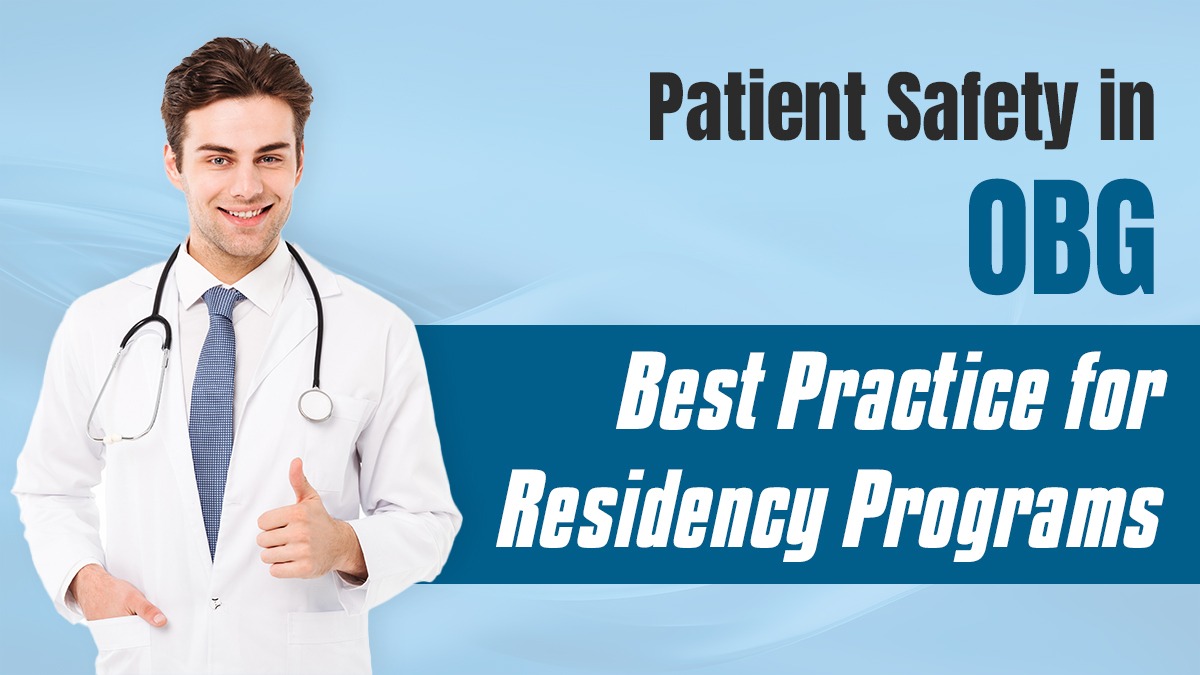Estimated reading time: 3 minutes
As an evergreen fact, every healthcare provider, especially a trainee, has to ensure patient safety in obstetrics and gynecology (OBG). Complex cases of patients and the very fact that it is a high-stakes environment make safety a prime focus for the obstetrics gynecology residency. From communication to standardised protocol, the skills and knowledge a residency program in OBG needs to impart to its residency to prioritise patient safety with the delivery of maximum-level care. Here are a few perspectives on key best practices in patient safety within OBG residency programs and why they are so crucial in training the next generation of specialists.
1. Communication and Collaboration
In obstetrics gynecology residency, effective communication is the cornerstone of providing a safe inpatient experience. The care for patients in OBG is multidisciplinary, so residents should be able to coordinate with nurses, anesthetists, and other specialists. Open communication coupled with clarity at every point will ensure that everyone will be on the same page, especially in more stressful situations like labour or surgical procedures.
2. Adherence to Standardized Protocols
Patient safety in OBS-GYN is also improved through strict adherence to standardised protocols that reduce variability in care and ensure that a given patient receives the appropriate treatment. Emergency management, medication administration, and surgical procedures are planned with an emphasis on protocols in OBS-GYN residency programs.
3. Enhancing Safety in Operating Rooms
For obstetrics and gynecology residents learning surgical skills is essential. Since obstetric surgeries are mostly very complex and risky, it will be required to take patient safety into account during the processes of the treatments. The main factors of safe practice would include conducting routine checklists before surgery, infection-free settings, and protocols after surgery.
4. Prioritize Patient-centred care and Informed Consent
Patient-centred approaches and informed consent are part of what guarantees safety within OBG care. The resident should learn how to involve patients in shared decision-making, including the procedures that could occur along with risks presented clearly. This helps patients know what is happening and develop confidence.
5. Use of Technology to Enhance Patient Safety
Advances in healthcare technology can support patient safety in the best residency programs for OBG. From electronic health records that ensure little error to telemedicine consultations that improve accessibility, technology plays an important role in today’s OBGYN practices.
6. Culture of Learning and Reporting
A safe environment allows OBG residents to report their mistakes and learn from them. The residency program should instil a culture that views mistakes as learning opportunities, helping residents grow without fear of judgement. This approach not only supports individual growth but also contributes to patient safety improvements.
Conceptual OBG: Enhancing Learning for OBG Residents
Conceptual OBG provides residents with resources that promote skill development and safety-focused learning. Thus, the platform offers case discussions, live lectures, as well as mock exams which are designed to improve the diagnostic and patient safety skills of OBG residency. They eventually turn out to be very well-equipped not only in the clinical aspects of obstetrics but also in the safety demands of the field.
Conclusion:
Lastly, ensuring patient safety is part of an obstetrics gynecology residency that requires expertise in communication, technology, and procedural standards. Best practices help the best OBG residency programs properly equip future OBGs to provide good safe and effective care.

